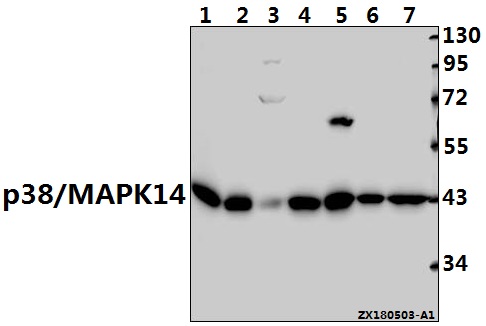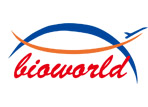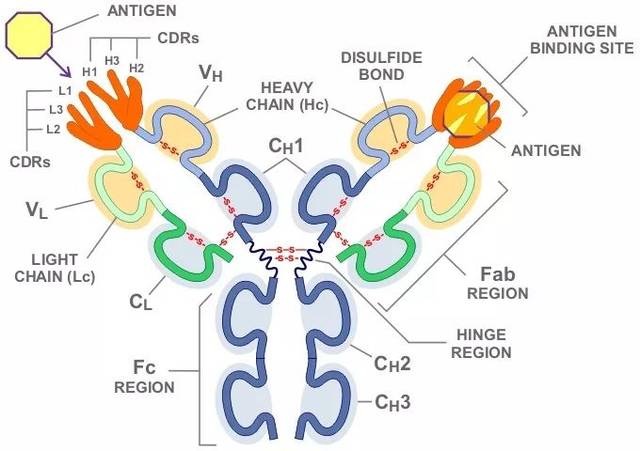Product Name :
p38/MAPK14 polyclonal antibody Background :
p38 MAP kinase (MAPK), also called RK or CSBP , is the mammalian orthologue of the yeast HOG kinase that participates in a signaling cascade controlling cellular responses to cytokines and stress. Four isoforms of p38 MAPK, p38α, β, γ (also known as Erk6 or SAPK3), and δ (also known as SAPK4) have been identified. Similar to the SAPK/JNK pathway, p38 MAPK is activated by a variety of cellular stresses including osmotic shock, inflammatory cytokines, lipopolysaccharide (LPS), UV light, and growth factors. MKK3, MKK6, and SEK activate p38 MAPK by phosphorylation at Thr180 and Tyr182. Activated p38 MAPK has been shown to phosphorylate and activate MAPKAP kinase 2 and to phosphorylate the transcription factors ATF-2, Max, and MEF2. SB203580 (4-(4-fluorophenyl)-2-(4 methylsulfinylphenyl)-5-(4-pyridyl)-imidazole) is a selective inhibitor of p38 MAPK. This compound inhibits the activation of MAPKAPK-2 by p38 MAPK and subsequent phosphorylation of HSP27. SB203580 inhibits p38 MAPK catalytic activity by binding to the ATP-binding pocket, but does not inhibit phosphorylation of p38 MAPK by upstream kinases. Product :
Rabbit IgG, 1mg/ml in PBS with 0.02% sodium azide, 50% glycerol, pH7.2 Storage&Stability :
Store at 4°C short term. Aliquot and store at -20°C long term. Avoid freeze-thaw cycles. Specificity :
MAPK14 pAb detects endogenous levels of MAPK14 protein. Immunogen :
Synthetic peptide, corresponding to Human MAPK14. Conjugate :
Unconjugated Modification :
Unmodification
p38/MAPK14 polyclonal antibody Background :
p38 MAP kinase (MAPK), also called RK or CSBP , is the mammalian orthologue of the yeast HOG kinase that participates in a signaling cascade controlling cellular responses to cytokines and stress. Four isoforms of p38 MAPK, p38α, β, γ (also known as Erk6 or SAPK3), and δ (also known as SAPK4) have been identified. Similar to the SAPK/JNK pathway, p38 MAPK is activated by a variety of cellular stresses including osmotic shock, inflammatory cytokines, lipopolysaccharide (LPS), UV light, and growth factors. MKK3, MKK6, and SEK activate p38 MAPK by phosphorylation at Thr180 and Tyr182. Activated p38 MAPK has been shown to phosphorylate and activate MAPKAP kinase 2 and to phosphorylate the transcription factors ATF-2, Max, and MEF2. SB203580 (4-(4-fluorophenyl)-2-(4 methylsulfinylphenyl)-5-(4-pyridyl)-imidazole) is a selective inhibitor of p38 MAPK. This compound inhibits the activation of MAPKAPK-2 by p38 MAPK and subsequent phosphorylation of HSP27. SB203580 inhibits p38 MAPK catalytic activity by binding to the ATP-binding pocket, but does not inhibit phosphorylation of p38 MAPK by upstream kinases. Product :
Rabbit IgG, 1mg/ml in PBS with 0.02% sodium azide, 50% glycerol, pH7.2 Storage&Stability :
Store at 4°C short term. Aliquot and store at -20°C long term. Avoid freeze-thaw cycles. Specificity :
MAPK14 pAb detects endogenous levels of MAPK14 protein. Immunogen :
Synthetic peptide, corresponding to Human MAPK14. Conjugate :
Unconjugated Modification :
Unmodification
-
 Western blot (WB) analysis of MAPK14 pAb at 1:500 dilution Lane1:The Lung tissue lysate of Mouse(40ug) Lane2:The Embryo tissue lysate of Mouse(40ug) Lane3:The Brain tissue lysate of Rat(40ug) Lane4:SGC7901 whole cell lysate(40ug) Lane5:EC9706 whole cell lysate(40ug) Lane6:Hela whole cell lysate(40ug) Lane7:Panc1 whole cell lysate(40ug)
Western blot (WB) analysis of MAPK14 pAb at 1:500 dilution Lane1:The Lung tissue lysate of Mouse(40ug) Lane2:The Embryo tissue lysate of Mouse(40ug) Lane3:The Brain tissue lysate of Rat(40ug) Lane4:SGC7901 whole cell lysate(40ug) Lane5:EC9706 whole cell lysate(40ug) Lane6:Hela whole cell lysate(40ug) Lane7:Panc1 whole cell lysate(40ug)
Hepatorenal protective effects of medicinal herbs in An-Gong-Niu-Huang Wan (AGNH) against cinnabar- and realgar-induced oxidative stress and inflammatory damage in mice
PMCID: Pubmed No.:29203196
17beta-estradiol promotes the odonto/osteogenic differentiation of stem cells from apical papilla via mitogen-activated protein kinase pathway
PMCID: Pubmed No.:25403930
An involvement of SR-B1 mediated p38 MAPK signaling pathway in serum amyloid A-induced angiogenesis in rheumatoid arthritis
PMCID: Pubmed No.:25932604
Epigallocatechin-3-gallate attenuates lipopolysaccharide-induced mastitis in rats via suppressing MAPK mediated inflammatory responses and oxidative stress
PMCID: Pubmed No.:25840281
DGAEE, a newly synthesized derivative of glycyrrhetinic acid, potently attenuates mouse septic shock via its main metabolite DGA in an IL-10-dependent manner
PMCID: Pubmed No.:26456500
Protective effect of butyrate against ethanol-induced gastric ulcers in mice by promoting the anti-inflammatory, anti-oxidant and mucosal defense mechanisms
PMCID: Pubmed No.:26604089
Ruscogenin suppresses mouse neutrophil activation: Involvement of protein kinase A pathway
PMCID: Pubmed No.:26134424
Role of the MAPK pathway in the observed bystander effect in lymphocytes co-cultured with macrophages irradiated with γ-rays or carbon ions
PMCID: Pubmed No.:25748424
PM2.5-induced oxidative stress increases adhesion molecules expression in human endothelial cells through the ERK/AKT/NF-κB-dependent pathway
PMCID: Pubmed No.:25876056
Alpha-Tomatine Exhibits Anti-inflammatory Activity in Lipopolysaccharide-Activated Macrophages
PMCID: Pubmed No.:25772114
Role of Dendritic Cell–Specific ICAM-3-Grabbing Nonintegrin on Dendritic Cells in the Recognition of Hepatitis B Virus
PMCID: Pubmed No.:26133046
MRP8/14 mediates macrophage efferocytosis through RAGE and Gas6/MFG‐E8, and induces polarization via TLR4‐dependent pathway
PMCID: Pubmed No.:33128793
Alhagi honey polysaccharides attenuate intestinal injury and immune suppression in cyclophosphamide-induced mice
PMCID: Pubmed No.:34128029
Lipophilic Extract and Tanshinone IIA Derived from Salvia miltiorrhiza Attenuate Uric Acid Nephropathy through Suppressing Oxidative Stress-Activated MAPK Pathways
PMCID: Pubmed No.:32933312
4‐Sulfonyloxy/alkoxy benzoxazolone derivatives with high anti‐inflammatory activities: Synthesis, biological evaluation, and action mechanism via p38/ERK‐NF‐κB/iNOS pathway
PMCID: Pubmed No.:32915501
Fuzhuan Brick Tea Boosts Melanogenesis and Prevents Hair Graying through Reduction of Oxidative Stress via NRF2-HO-1 Signaling
PMCID: Pubmed No.:35326249
Pueraria protein extract inhibits melanogenesis and promotes melanoma cell apoptosis through the regulation of MITF and mitochondrial‑related pathways
PMCID: Pubmed No.:36734267
Bioworld Biotech only provide peptides for our antibodies and do not provide additional peptide customization services.
Price/Size :
USD 368/1mg/vial
Tips:
For phospho antibody, we provide phospho peptide(0.5mg) and non-phospho peptide(0.5mg).Describe :
Blocking peptides are peptides that bind specifically to the target antibody and block antibody binding. These peptide usually contains the epitope recognized by the antibody. Antibodies bound to the blocking peptide no longer bind to the epitope on the target protein. This mechanism is useful when non-specific binding is an issue, for example, in Western blotting (WB) and Immunohistochemistry (IHC). By comparing the staining from the blocked antibody versus the antibody alone, one can see which staining is specific; Specific binding will be absent from the western blot or IHC performed with the neutralized antibody.Formula:
Synthetic peptide was lyophilized with 100% acetonitrile and is supplied as a powder. Reconstitute with 0.1 ml DI water for a final concentration of 10 mg/ml.The purity is >90%,tested by HPLC and MS.
Storage:
The freeze-dried powder is more stable. For short time at 2-8°C. For long term storage store at -20°C.
Note :
This product is for research use only (RUO only). Not for use in diagnostic or therapeutic procedures.
 p38/MAPK14 polyclonal antibody
p38/MAPK14 polyclonal antibody  Datasheet
Datasheet COA
COA MSDS
MSDS SHIP
SHIP